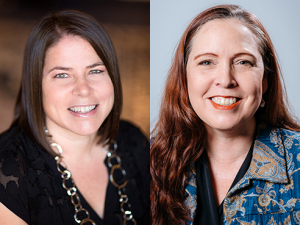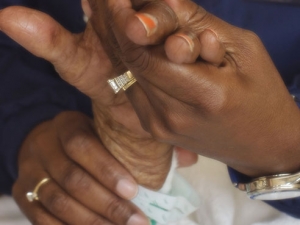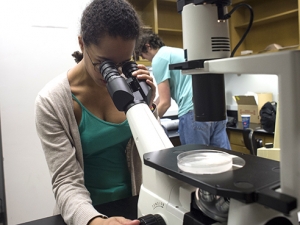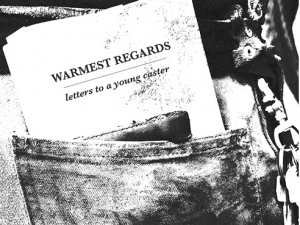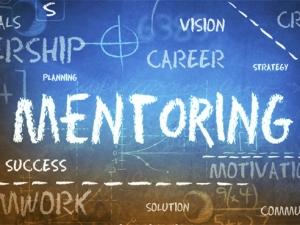 How can you spot a predatory journal? See four warning signs here.When accounting Professor Arline Savage, Ph.D., gets mad she hits the books. “My research is all over the place, because what appeals to me is usually something that made me angry,” she said.
How can you spot a predatory journal? See four warning signs here.When accounting Professor Arline Savage, Ph.D., gets mad she hits the books. “My research is all over the place, because what appeals to me is usually something that made me angry,” she said.
Fed up with a flood of email solicitations from questionable research journals, Savage began digging in to the murky world of pay-to-publish open access journals. These outlets also are known as predatory journals, because they don’t have any subscribers or perhaps any actual readers at all. Their prey is the author — a faculty member or graduate student with research to publish — and the bait is a publication in a supposedly legitimate scholarly periodical. But their only real concern is attracting publication fees and other tolls, Savage said. “It’s a moneymaking racket.”
Now Savage and two co-authors have published a combined stakeholder analysis and call to arms in the prestigious “Journal of Business Ethics.” Their research already has led to new policies in the Collat School of Business, and Savage is helping lead calls for the Association to Advance Collegiate Schools of Business (AACSB), which accredits business schools around the world, to take a stand against predatory journals. (How can you spot a predatory journal? See four warning signs here.)
What’s the big deal?
Self-publishing has a long history, Savage and colleagues note in their article. Popular hits that originally were printed at the author’s expense include Benjamin Franklin’s “Poor Richard’s Almanac,” “The Joy of Cooking,” John Grisham’s “A Time to Kill” and the modern phenomenon “Fifty Shades of Grey.” But the “one big difference,” the authors note, is “the presumption that the reported research has been vetted by external referees and therefore peer-reviewed. Predatory articles lack such a process (although many claim otherwise).”
Because of this deception, nearly everyone loses in the predatory journal game, the researchers argue. Universities, professional disciplines and their benefactors and accreditation bodies derive no long-term benefit. Neither do the individual academics who publish in them, even though these citations may for a time help advance their careers. The only beneficiaries are the for-profit publishers. “Inferior publications hurt the scientific community of each discipline and fail to adequately assess knowledge creation — the foundation of all research,” the authors write.
Welcome to the jungle
There are plenty of predators. One 2015 study reported that there were nearly 12,000 predatory journals, with authors paying an average of $178 per article in fees across a sample of 613 journals studied. In an editorial published in December in the “Journal of Nuclear Cardiology,” UAB Professor Ami Iskandrian, M.D., noted that he receives an average six “call for papers” solicitation emails a day, seven days a week. “It’s becoming more and more prevalent,” Savage said. “You get solicited all the time to submit articles or to become a member of editorial review boards.”
 In a paper in the "Journal of Business Ethics," Arline Savage (above) and her co-authors explain how pay-to-publish journals harm everyone, from individual faculty members to entire academic disciplines.Not all of these solicitations are fraudulent, but the tactics detailed in Savage’s paper are eye-opening. Here’s a short list:
In a paper in the "Journal of Business Ethics," Arline Savage (above) and her co-authors explain how pay-to-publish journals harm everyone, from individual faculty members to entire academic disciplines.Not all of these solicitations are fraudulent, but the tactics detailed in Savage’s paper are eye-opening. Here’s a short list:
- Creating websites with the same names as reputable journals
- Adopting journal names that are nearly identical to existing, prestigious ones “in the hopes that contributors will confuse one for the other”
- Misrepresenting their locations — claiming to be based in the United States when their offices are in Nigeria, for instance
- Using trickery to get well-known scholars in a field to serve on their editorial boards or simply using their names without asking
- Gaming journal-ranking algorithms by requiring authors to cite other articles in the same journal or by the same author.
Then there is “journal hijacking,” in which investors purchase a legitimate journal and convert it into a predator. In one example in the Savage paper, the hijackers published more than 1,000 articles in their new journal in 2014, at a whopping $1,200 per article in publication fees, compared with 63 articles published, pre-hijacking, in the previous year.
Resources like the now-defunct Beall’s list and its successors, including Stop Predatory Journals (https://predatoryjournals.com), try to keep track of questionable outlets. But new ones spring up all the time, Savage said — “you can never have a full list.” Nevertheless, there are several red flags.
Is it safe? 4 warning signs of a predatory journal
|
Changing the rules
Deceptive tactics can ensnare young faculty and others new to research, Savage says, but many participants realize what’s going on and opt to pay to burnish their CVs. “If your article’s peer review comes back in days or weeks, you know something is wrong,” she said; it can take years to move a paper through a prestigious journal’s editorial process. “No one is saying you can’t publish in a predatory journal,” Savage said. “You can put it under ‘other publications’; but don’t say, when it comes to evaluation time, that this is a peer-reviewed publication.” That is no longer an option in the Collat School of Business. “As a result of this research, our faculty affairs committee took up the issue, and we have changed our faculty policy and procedures in the school,” Savage said.”
“Predatory journals will only exist as long as there are writers desperate or ignorant enough to publish in them, academic administrators uninformed enough to count them or accreditation bodies naive enough to accept them,” Savage’s article notes. It also includes practical recommendations for departments to protect themselves from predatory publishing.
What’s a department to do? Protection from predatory publishing
|
Changing the world through numbers
Savage’s paper, written with longtime collaborator Mark Simkin at the University of Nevada and Alexander McLeod of Texas State University, appears in one of the top business journals in the world. The “Journal of Business Ethics” is part of the list used by the Financial Times to rank faculty research productivity for its global MBA rankings. It’s not the first time that Savage has turned her frustration into real-world action. “I get interested in a topic when I find myself saying, ‘That’s not right,’” she said. Her 2010 paper with Simkin warned fellow faculty that instructor-only textbook resources offered for sale online were compromising the banks of questions that many used for their tests. “Our advice was don’t use textbook test banks,” Savage said.
Now that she has returned to the faculty after serving for four years as the chair of the accounting department, Savage is looking forward to getting back into high gear on her research. She is particularly fond of case studies — educational accounts that go through a rigorous peer review to establish their efficacy in the classroom. She is currently ranked No. 14 nationally among all accounting faculty during the past 12 years in educational and accounting pedagogy publications, according to the business faculty rankings maintained by BYU.
One of her favorites is a widely used case study on the unintended effects of an accounting rule change that altered the way companies recognize their revenues. Pharmaceutical companies responded by simply halting production on some suddenly “unprofitable” vaccines. “Babies weren’t getting vaccinated because of an accounting change,” Savage said. “It has been a great benefit to students, to show them that accounting has real-world implications.”
Where the sharks arePredatory journals preferentially target certain disciplines. In this 2015 study cited in Savage’s paper, librarians from the University of Wisconsin found that science, medicine/health, technology and business accounted for more than 86 percent of pay-to-publish publications. |
||
| Science | 30.5% | |
| Medicine/health | 21.8% | |
| Technology | 20.1% | |
| Business | 14.2% | |
| Education | 4.1% | |
| Humanities/social science | 3.4% | |
| Multidisciplinary | 2.5% | |
| Government or politics | 1.2% | |
| Communication | 0.9% | |
| Philosophy/religion | 0.7% | |
| Arts/entertainment | 0.4% | |
| Language/literature | 0.3% | |









